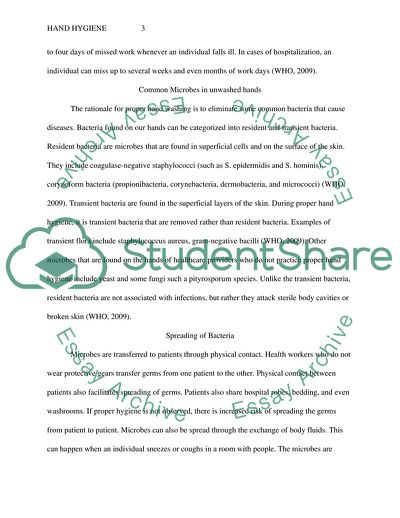Hand Hygiene Research Paper Example | Topics and Well Written Essays - 750 words. https://studentshare.org/medical-science/1836265-proper-hand-hygiene
Hand Hygiene Research Paper Example | Topics and Well Written Essays - 750 Words. https://studentshare.org/medical-science/1836265-proper-hand-hygiene.


